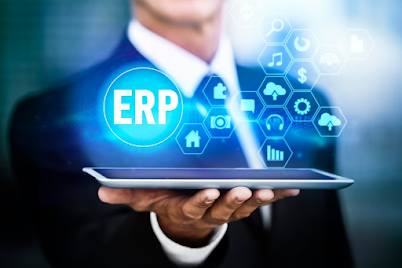How does ERP software for retail business integrate with point-of-sale systems?
ERP software for retail businesses integrates with Point of Sale (POS) systems through a combination of technologies and processes. This integration is crucial for synchronizing data and streamlining operations between the front-end (sales transactions) and back-end (inventory management, financials, etc.) of a retail business. Here's how ERP software typically integrates with POS systems:
ERP software and POS systems share critical data such as sales transactions, inventory levels, customer information, and pricing. This ensures that both systems have access to the most up-to-date information.
APIs and Connectors:
Application Programming Interfaces (APIs) and connectors are used to establish communication between the ERP software and POS system. APIs allow the systems to exchange data in a standardized format.
Real-time Updates:
Integration enables real-time updates. For example, when a sale is made through the POS system, the ERP system is immediately updated with information about the sale, including changes in inventory levels and revenue.
Inventory Management:
POS systems provide real-time information on product sales. This data is integrated into the ERP system's inventory management module, helping in maintaining accurate stock levels and optimizing procurement processes.
Sales and Financial Reporting:
Sales data captured by the POS system is transferred to the ERP system for comprehensive reporting and analysis. This includes sales trends, customer behavior, and financial performance.
Customer Relationship Management (CRM):
Information about customer interactions and purchases made through the POS system is integrated into the ERP's CRM module. This enables retailers to track customer behavior, preferences, and purchase history for personalized marketing and service.
Multi-channel Integration:
In a multi-channel retail environment, where sales occur through various channels (e.g., physical stores, e-commerce platforms), integration ensures that data is consistent and accurate across all channels.
Promotions and Discounts:
Information about promotions, discounts, and loyalty programs applied through the POS system is synchronized with the ERP system. This allows for accurate tracking of promotional effectiveness and customer engagement.
Supplier and Vendor Management:
Data related to purchases made through the POS system, such as orders and invoices, is integrated into the ERP's supplier and vendor management module. This streamlines procurement processes and strengthens supplier relationships.
Employee Management:
Information about employee transactions and performance metrics recorded by the POS system is integrated into the ERP's employee management module. This assists in tasks like payroll processing and performance evaluation.
Compliance and Regulatory Reporting:
Data captured by the POS system, particularly related to financial transactions, is integrated into the ERP system's compliance module. This helps in meeting regulatory requirements and generating accurate tax reports.
Security and Data Protection:
Integration between the ERP and POS systems ensures that sensitive data is securely transmitted and stored, adhering to industry-standard security protocols.
By integrating ERP software with POS systems, retailers can achieve a seamless flow of information across their entire operation. This leads to improved efficiency, accurate reporting, better customer service, and ultimately, greater business success.

Comments
Post a Comment